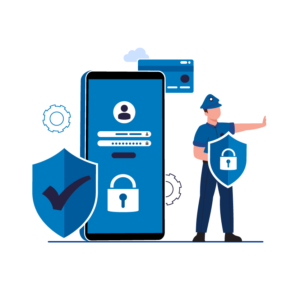Webinar:
How to protect code and data confidentiality and integrity during the entire device lifecycle

Only 10 years ago, no one was talking about IoT security. Today, with the proliferation of devices connected to the Internet, security has become a major concern both for the users and the manufacturers.
With the fragmentation of the IoT market, there is no standard security solution. Indeed, depending on the use case and the required level of protection, the hardware and software used to design the device vary, which can cause interoperability issues. This makes security difficult to integrate because it must be device-specific and often leads to hardware and/or software costs reducing or offsetting the product profitability.
To help you figure this out, in this article we will explain why you should care, what solutions are available and how much it will cost.
If in the past, devices were run on closed networks protected by a firewall, as time went by and Cloud services developed, companies started to connect their devices directly to the Internet. This spread of Cloud connected devices poses a serious security problem, especially when using old devices that were not designed for this purpose or new devices that are not properly protected.
In March 2021, 150 000 video surveillance cameras using a video surveillance software from the start-up Verkada were hacked. The hackers gained access to the image feed and the computer surveillance systems of Verkada’s clients: Tesla, Cloudflare, prisons, hospitals, schools, gyms.
The hack was carried out by an international hacktivist group, but had it been cyber criminals, it could have had dramatic consequences. This shows that there’s still a lack of awareness in the IoT ecosystemand governments are now obliged to legislate.
As an IoT manufacturer, you must therefore adapt and anticipate new uses and regulations.
The recent announcement of the Cyber Resilience Act from the European Union is revealing of this trend.
Investing in cybersecurity has become unavoidable to counter the growing threats coming from the Internet and most of all to preserve your reputation and business durability.
The countermeasure depends on the threat. Thus, the security functions of connected objects are designed according to an attacker model. This understanding and anticipation of the threats is essential to define the security functions to be implemented. The fact remains that the security of connected objects is based on a root of trust. This root of trust is the security foundation of the device, and it can take several forms for different security levels:
The choice of a type of root of trust depends on the use case, the device capabilities and the possibility to modify the hardware layout. For some applications, maximum security and therefore trust in the device is necessary: electricity meters because they send billing data, IoT for the health sector because of sensitive data, or connected devices used to make payments.
To define which type of protection is needed for your product, you need to ask yourself what type of threat you are facing. This is called threat modelling and it will help you define if hardware or software security should be prioritized. In terms of cybersecurity, it is generally preferable to layer security to make sure you cover a maximum of situations.
Secure element: the most expensive, but also the most secure solution. The cost includes the chip, the integration with the other elements of the device, the R&D and the complexity of maintenance of the chosen system (PKI, TSM, KMS, etc.). Let’s say you manufacture GPS trackers for asset tracking. With a secure element that adds at least $1 per device, this may be justified if you are tracking trucks, but not at all if you are tracking boxes or pallets.
Trusted execution environment (TEE), Secure Enclaves: some mid to high-end processors incorporate a security feature. They are more expensive than basic processors and must be adapted to each use case, which means you need to have the skills in-house to understand the technology and adapt it to your device. Not all offer the same level of security and should be correctly managed and activated at production.
Software Root of Trust: a software solution that can be 5 to 6 times cheaper than hardware solutions and it can be post provisioned without having to modify the hardware layout or configure it during device manufacturing. Root-of-trust software offers protection from within the device, giving it the ability to defend itself against static and dynamic attacks by monitoring its environment and through obfuscation, whitebox cryptography and data protection.
Secure-by-design costs 10 to 100 times less over the lifetime of your product, but it requires long-term vision. Unfortunately, IoT projects are usually aiming for the lowest possible immediate cost, which leaves no flexibility to consider possible future changes or developments.
For example, some manufacturers don’t plan for software updates. If updating becomes necessary, they must hire technicians to go and plug a USB key into each device and manually update the devices. If they had planned this from the start, it would have been much easier and cheaper. So, by spending a few thousand extra Euros up front, you can save millions in the future, which is what secure-by-design is for.
With the right root of trust solution, you can offer the level of protection your customers expect while maintaining your profitability. With QShield, you get a comprehensive set of in-app protection technologies for software running on embedded architectures such as obfuscation, Environment sanity checks (RASP), white box crypto and digital vault. With adaptable layered protection measures and countermeasures against a wide range of attacks, it keeps your applications, data, code and keys safe. No hardware element is mandatory and resecuring your devices can be achieved without physical access to the device, with a simple OTA update.
Learn more about QShield, our affordable and reliable software security solution, by talking to one of our experts.
Webinar:
How to protect code and data confidentiality and integrity during the entire device lifecycle